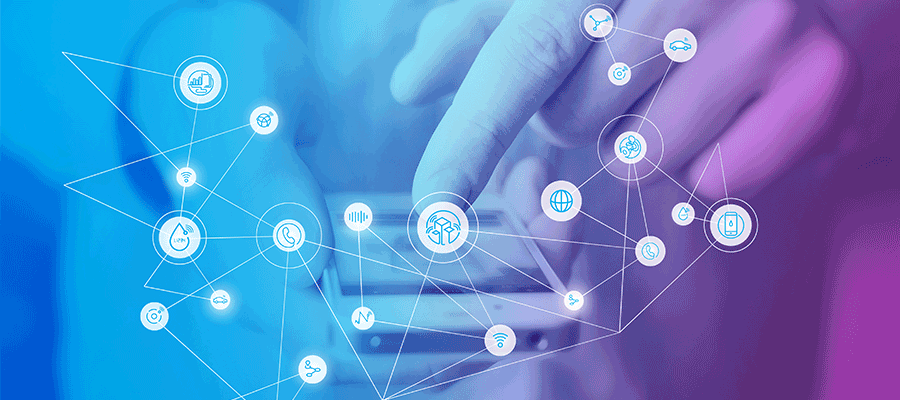
In this post, we take a close look at the concept of the IoT ecosystem, and try to understand how IoT ecosystems can impact water network management for the benefit of both consumers and utility operators.
What is an IoT Ecosystem?
An IoT ecosystem is a shared environment, in which IoT devices and platforms interact with one another, creating an interconnected space where data can be accessed and controlled by different entities. [1]
IoT ecosystems generate a seamless flow of data between numerous on-site devices and central data systems. This data flow creates countless opportunities for optimized management of large-scale activities. Just think of municipal garbage disposal operations, for example, or urban traffic and public transportation monitoring. Water network management is another great example, but we’ll get to that in a bit.
IoT ecosystems can do wonders for urban environments. It’s no surprise that numerous cities across the world have already adopted IoT practices in an attempt to become “Smart Cities” that provide their residents with better quality of life. [2]
How Can We Create an IoT Ecosystem?
From a technological standpoint, IoT ecosystems are designed to obtain, send, receive and analyze data. To do so, they require many interactive components, including physical devices and sensors, applications and software, dashboards and remotes, analytics and data storage, and a reliable network that can enable communication. [3]
Yet IoT ecosystems are not based on technology alone. Connected technology is important, but it can’t do any good without purposeful human intervention. Smart ‘urban connectivity’ is often the outcome of multi-level, cross-sector collaborations between people and organizations that are committed to positive change. In addition, IoT ecosystems must adhere to specific government or municipal regulations.
The Benefits of Water Network-Based IoT Ecosystems
We can view IoT ecosystems on both macro and micro levels. Macro-level ecosystems include all major IoT enterprises operating in a certain designated area (for example: traffic, weather and air pollution management). But every specific urban IoT enterprise is also an ecosystem in its own right – including urban water network management.
When discussing water network management from an IoT ecosystem perspective, we must begin by defining its goals. This ecosystem can accomplish a lot of great things. For starters, it can monitor and analyze regular and irregular water activity. It can communicate irregularities to designated parties in real-time. It can quickly formulate and recommend proper responses that will fix problems and optimize ongoing operations.
In practical terms, The IoT Water Network Ecosystem is based on smart water meters, whose sensors transmit data to remote reading stations. Every meter is logged into the system, so if there is a missed reading – or an irregular reading – the system will immediately take notice. This way, leaks can be quickly discovered and repaired, thus saving water and money for the water consumer.
The ecosystem must be able to collect and manage all accumulated data. Data transfer is done via a cellular network, while data management is executed via systems that analyze the data and generate a wide range of reports and alerts. Optimal data management can help cities and water utility operators repair water pressure issues, discover and fix water supply loss, and more.
Last but not least, billing is also a central ecosystem component. Billing information corresponds with the collected data and sent directly to the consumer.
Looking Ahead to the Future
When water network IoT ecosystems work properly, everyone has easy access to robust data. Consumers enjoy better water at lower prices. Technicians and operators are more effective and therefore make a stronger impact. The city improves its resource use and enhances its reputation.
As for the future, it is clear that tech innovation is paving the way for IoT ecosystem dominance. Smart cities that utilize coexisting IoT ecosystems are a global reality, relying on shared resources such as cloud infrastructures, security protocols and important privacy regulations. As more and more cities worldwide become ‘smarter’, IoT water network management continues to play a major role in creating transparent and energy-efficient urban landscapes.
References
[1] Business Insider Intelligence, Here’s How the Internet of Things will Explode by 2020, April 28th, 2016
[2] Yahya Mohamed Mao, What is the Role of IoT in Smart Cities?, September 26th, 2019
[3] ETMA 2, What is the Internet of Things Ecosystem